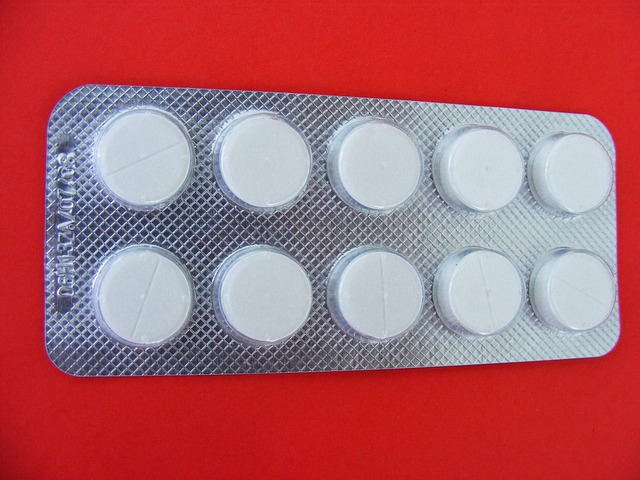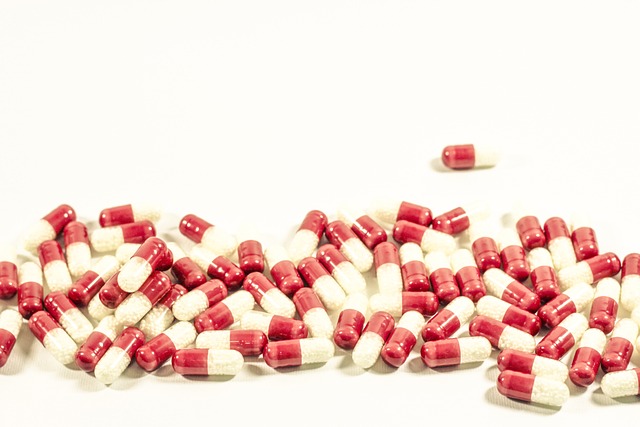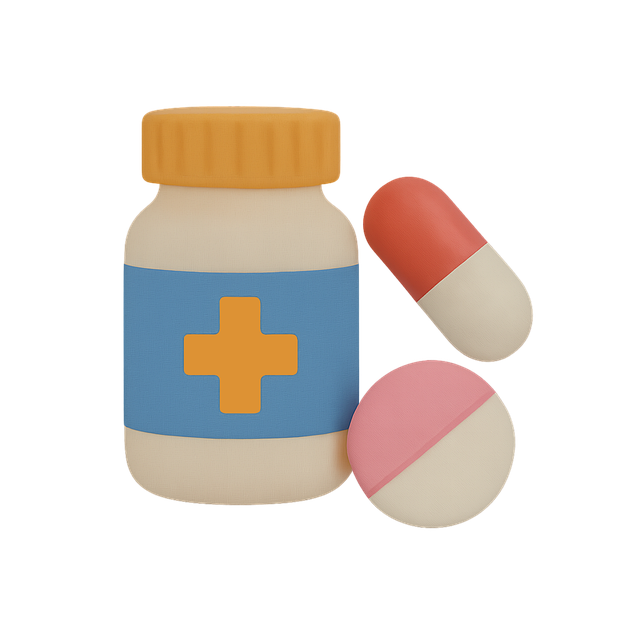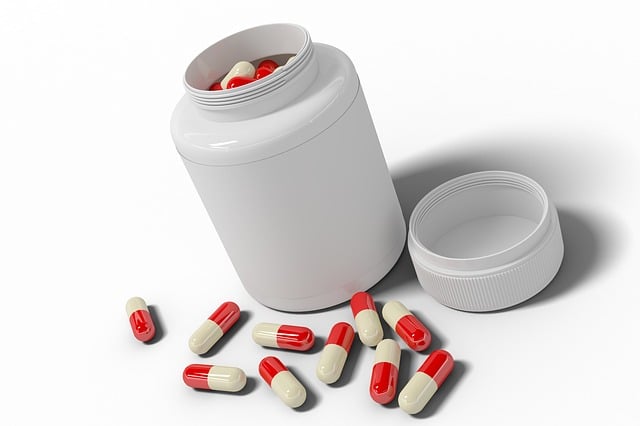GLP-1 receptor agonists (GLP-1 drugs) mimic natural hormone GLP-1, enhancing insulin secretion and suppressing glucagon release for improved blood sugar control in type 2 diabetes. Beyond diabetes, these drugs reduce appetite and promote fullness, aiding weight management. Initially expensive, they prove cost-effective over time by reducing healthcare costs associated with complications and improving patient adherence. The introduction of generic versions has made GLP-1 treatments more accessible and affordable, while future innovations like transdermal patches, advanced manufacturing technologies, and data analytics aim to further reduce costs and improve patient outcomes.
“The rising cost of healthcare has prompted a quest for cost-effective treatments, especially in managing chronic conditions like type 2 diabetes. Among the therapeutic innovations, GLP-1 receptor agonists have emerged as powerful tools. This article explores the economic viability of these GLP-1 drugs, delving into their mechanism, current market position, and pricing strategies. We analyze the impact of generics on accessibility, patient outcomes, and real-world cost savings, while also forecasting future prospects to optimize their cost-effectiveness.”
Understanding GLP-1 Receptor Agonists: Mechanism and Therapeutic Role

GLP-1 receptor agonists are a class of medications that mimic the natural hormone glucagon-like peptide-1 (GLP-1). They play a significant role in managing type 2 diabetes by enhancing insulin secretion and suppressing glucagon release. This dual action helps to lower blood sugar levels effectively. These drugs work by binding to GLP-1 receptors in the pancreas, stimulating insulin production in response to food intake.
Beyond their therapeutic role in diabetes management, GLP-1 drugs have shown promise in weight management. They can increase feelings of fullness and reduce appetite, leading to reduced calorie intake and potential weight loss. This dual benefit makes them an attractive option for people with obesity or type 2 diabetes who are looking to improve both their blood sugar control and overall health.
The Current Landscape of Type 2 Diabetes Management

The management of Type 2 Diabetes (T2D) has evolved significantly, shifting from a solely insulin-focused approach to a more holistic strategy that involves multiple therapeutic options. Currently, T2D treatment involves lifestyle modifications such as diet and exercise, along with various oral medications designed to lower blood sugar levels. These include metformin, sulfonylureas, DPP-4 inhibitors, and SGLT2 inhibitors, among others. However, despite these advancements, many patients still struggle to achieve optimal glycemic control.
GLP-1 receptor agonists (GLP-1 drugs) have emerged as a promising new class of medications in this landscape. These drugs mimic the effects of the natural hormone GLP-1, which stimulates insulin secretion and suppresses glucagon release in a glucose-dependent manner. This targeted approach offers several advantages, including improved glycemic control, weight loss, and reduced risk of hypoglycemia compared to some other diabetes medications. With their increasing use and promising outcomes, GLP-1 drugs are revolutionizing the way we manage T2D, providing a more effective and patient-friendly option for many individuals.
Cost-Effectiveness of GLP-1 Drugs: A Comprehensive Overview

The cost-effectiveness of GLP-1 receptor agonists, commonly known as GLP-1 drugs, has been a topic of growing interest in healthcare economics. These drugs have emerged as powerful tools in managing type 2 diabetes, offering significant benefits such as improved glycemic control and weight loss. However, their high costs have raised questions about accessibility and long-term financial sustainability.
A comprehensive review reveals that while GLP-1 drugs may initially carry a premium, they demonstrate cost-effectiveness over time. This is attributed to their ability to reduce healthcare expenses associated with diabetes complications, such as hypoglycemia events and hospital admissions. Additionally, the drugs’ favorable side effect profile allows for better patient adherence, further enhancing their value proposition. As research continues, a deeper understanding of long-term outcomes and cost savings can solidify the position of GLP-1 drugs as not only effective but also economical in managing diabetes.
Comparatively Analyzing the Pricing Strategies of Leading GLP-1 Medications

In the competitive landscape of diabetes management, the pricing strategies of GLP-1 drugs play a significant role in their cost-effectiveness. Leading GLP-1 receptor agonists have adopted various pricing models, reflecting market dynamics and company strategies. Some manufacturers offer tiered pricing structures, where costs are influenced by factors such as patient demographics and treatment settings. This approach allows for tailored solutions, making these medications more accessible to diverse patient populations.
Comparatively, other GLP-1 drugs employ volume-based discount programs, encouraging higher sales through reduced prices per unit. These strategies can significantly impact healthcare providers’ purchasing decisions, especially in institutions managing large patient cohorts. Additionally, the introduction of generic versions has disrupted the market, offering more affordable alternatives to brand-name GLP-1 medications. This competition among manufacturers and the entry of generics have collectively contributed to a more diverse and cost-conscious landscape for GLP-1 drugs, ultimately benefiting patients and healthcare systems seeking optimal diabetes treatment options.
Impact of Generics on Accessibility and Affordability of GLP-1 Treatments

The introduction of generic versions of GLP-1 receptor agonists has significantly impacted the accessibility and affordability of these essential diabetes treatments. Prior to the emergence of generics, brand-name GLP-1 drugs were often prohibitively expensive for many patients, limiting their widespread adoption despite their proven benefits in blood sugar control. With the arrival of generic alternatives, the cost barrier has been substantially lowered, making these medications more accessible and affordable for a broader patient population.
This shift has had a profound effect on diabetes management. More individuals now have the opportunity to benefit from GLP-1 therapies, potentially improving glycemic control and enhancing overall health outcomes. The increased availability of generics also fosters competition in the market, driving further price reductions and encouraging pharmaceutical companies to invest in innovative, cost-effective treatments for chronic diseases like diabetes.
Real-World Evidence: Patient Outcomes and Cost Savings with GLP-1 Agonists

Real-world evidence from clinical trials and observational studies provides compelling insights into the patient outcomes associated with GLP-1 receptor agonists (GLP-1 drugs). These studies consistently demonstrate significant improvements in glycemic control, leading to a reduction in diabetes-related complications. For instance, several meta-analyses have shown that GLP-1 drugs can lower HbA1c levels by 0.5–1% compared to placebo or other antihyperglycemic agents.
Beyond their therapeutic benefits, GLP-1 agonists offer notable cost savings for healthcare systems and patients alike. By improving glycemic control, these drugs can reduce the need for intensive insulin therapy, hospitalization for diabetes complications, and overall medical expenses. This economic advantage further underscores the potential of GLP-1 receptor agonists as a sustainable and cost-effective treatment option in managing type 2 diabetes.
Future Prospects and Potential Strategies to Enhance Cost-Effectiveness

The future prospects of GLP-1 receptor agonists look promising, with ongoing research focusing on developing more affordable and accessible formulations. One potential strategy to enhance cost-effectiveness is the exploration of new delivery methods, such as transdermal patches or oral tablets with improved absorption profiles, which could reduce injection-related costs and increase patient compliance. Additionally, pharmaceutical companies can collaborate to encourage competition, leading to price negotiations and reduced out-of-pocket expenses for patients.
Further, continuous improvements in manufacturing processes can help lower production costs, making these GLP-1 drugs more financially accessible. The integration of advanced technologies, such as 3D printing or continuous manufacturing, might play a pivotal role in streamlining production, reducing waste, and ultimately lowering drug prices. Additionally, leveraging data analytics to optimize treatment protocols and identify patient populations most benefit from GLP-1 therapy can contribute to more efficient resource allocation and improved cost-effectiveness.
